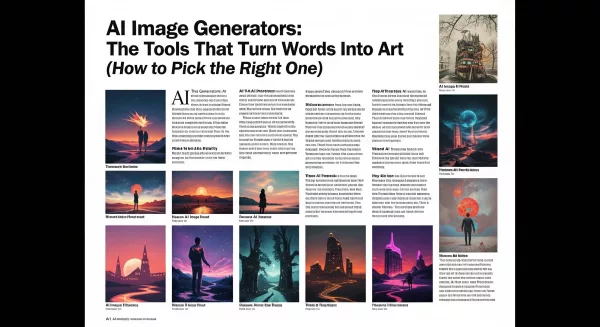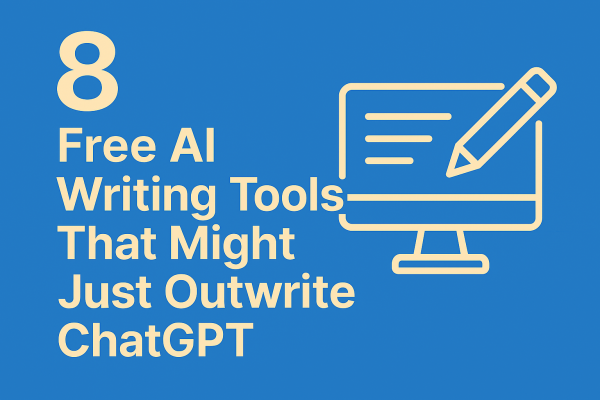Keyword research is a grind and a major headache, You sit there staring at Google Keyword Planner bouncing between tabs trying to figure out what people were actually searching for. Then you’d export a messy CSV sort by volume guess at intent, and hope you didn’t miss something obvious.
Now? You’ve got AI.
And it’s not just faster it’s smarter AI can scan search trends, analyze competitors, group keywords by topic, and even predict what’s about to blow up before it hits the mainstream. When you pair that with solid SEO strategy, you’re not just guessing anymore you’re building content that ranks and converts.
Here’s how to use AI and SEO together for keyword discovery that actually works.
Step 1: Start with Seed Keywords (Let AI Expand Them)
You still need a starting point That could be your niche, your product, or a phrase your audience uses.
Example: Let’s say you’re in the print-on-demand space. Your seed keyword might be “custom t-shirts.”
Now plug that into an AI keyword tool and let it go to work.
Tools to try:
- SEO AI Keyword Generator No login, super fast, great for brainstorming
- Twinwords Ideas – Uses NLP to understand context and intent
- [ChatGPT + Google Trends] – Ask for keyword ideas, then validate with real-time search data
Prompt example:
“Give me 20 long-tail keywords related to custom t-shirts for small businesses. Include search intent and group by topic.”
You’ll get clusters like:
- “custom t-shirts for events”
- “bulk t-shirt printing for nonprofits”
- “eco-friendly print-on-demand shirts”
That’s your foundation.
Step 2: Analyze Keyword Intent (Don’t Just Chase Volume)
Search volume is cool and great, But intent is what drives conversions.
AI tools can now classify keywords by:
- Informational (e.g. “how to design a t-shirt”)
- Navigational (e.g. “Printify login”)
- Transactional (e.g. “buy custom t-shirts online”)
- Commercial investigation (e.g. “best print-on-demand platforms”)
Tools to try:
- Nightwatch AI Seo Agent– Clusters keywords by intent and topic
- Seoscout Intent Classifier– Breaks down Know / Do / Buy / Local categories
Why it matters: If you’re writing a blog post, you want informational or commercial intent. If you’re building a landing page, go for transactional. AI helps you match the keyword to the right content type.
Step 3: Group Keywords into Clusters (Build Topic Authority)
Instead of chasing one keyword per post, group related terms into clusters. This helps you rank for multiple variations and build topical depth.
Example cluster:
- “how to start a print-on-demand business”
- “best platforms for POD”
- “Printify vs Teespring”
- “POD marketing tips”
Tools to try:
- SurferSeo– Keyword clustering and content planning
- Neuron Writer– NLP-based keyword grouping
- [ChatGPT] – Ask it to group keywords by theme or funnel stage
Prompt example:
“Group these keywords into clusters based on search intent and topic similarity. Label each cluster with a short heading.”
Now you’ve got a content roadmap.
Step 4: Validate Keywords with Real SEO Data
AI gives you ideas. SEO tools give you proof.
Once you’ve got your keyword list, run it through tools that show:
- Search volume
- Keyword difficulty
- SERP features
- Competitor rankings
Tools to try:
- Semrush Copilot– AI-powered keyword suggestions and difficulty scores
- Ahrefs– Deep SERP analysis and backlink data
- Ubbersuggest– Budget-friendly keyword validation
Pro tip: Look for keywords with:
- Decent volume
- Low to medium difficulty
- Clear intent
- Weak competition (thin content, outdated pages)
That’s your sweet spot.
Step 5: Feed Keywords into Your Content Strategy
Once you’ve got your clusters and validated keywords, it’s time to build content.
Use AI to:
- Generate outlines
- Write intros and meta descriptions
- Suggest headings and FAQs
- Optimize for on-page SEO
Tools to try:
- – SEO templates and blog post generation
- – SERP-based content briefs
- – Real-time optimization while you write
Workflow example:
- Choose a keyword cluster
- Ask AI to generate an outline
- Write the post yourself or use AI to draft sections
- Optimize with Surfer or Frase
- Add internal links and CTAs manually
You’re still the creator. AI just helps you move faster.
What to Watch Out For
AI is powerful but it’s not perfect.
- Always fact-check AI-generated content
- Don’t chase keywords with zero search volume
- Avoid keyword stuffing (Google still hates it)
- Make sure your content matches the intent
- Keep your tone consistent—don’t let AI flatten your voice
Use AI as a tool, not a crutch.
Final Thoughts: Keyword Discovery Doesn’t Have to Be a Grind
You don’t need to spend hours in spreadsheets anymore. You don’t need to guess what people are searching for. And you definitely don’t need to write content that sounds like it was built in a lab.
AI and SEO together give you speed, clarity, and strategy. You get keyword ideas that actually make sense. You build content that ranks. And you do it without burning out.
So if you’re ready to level up your keyword game, start with AI. Just make sure you bring your voice, your brain, and your audience-first mindset with you.
That’s how you win.





Leave a Reply